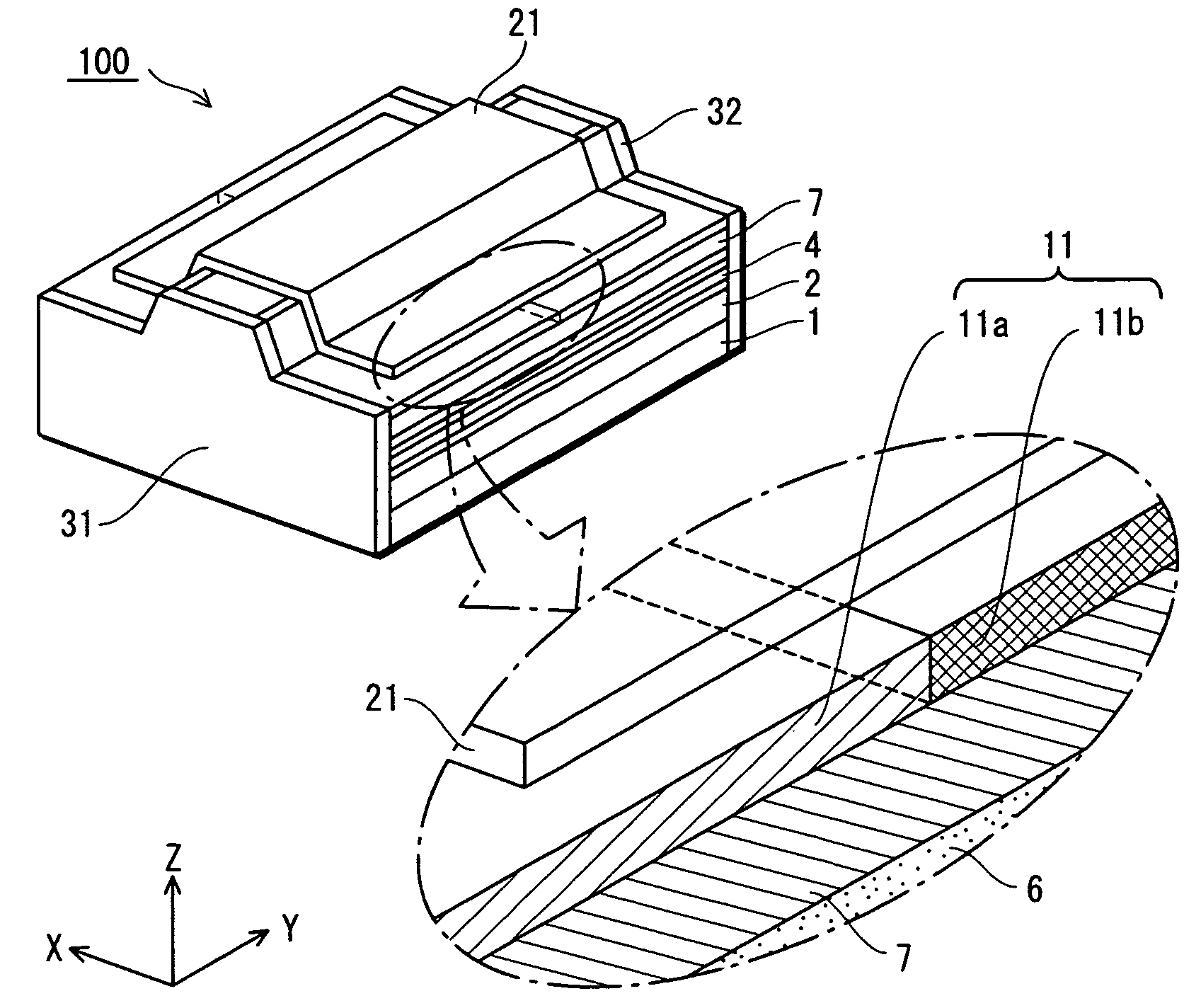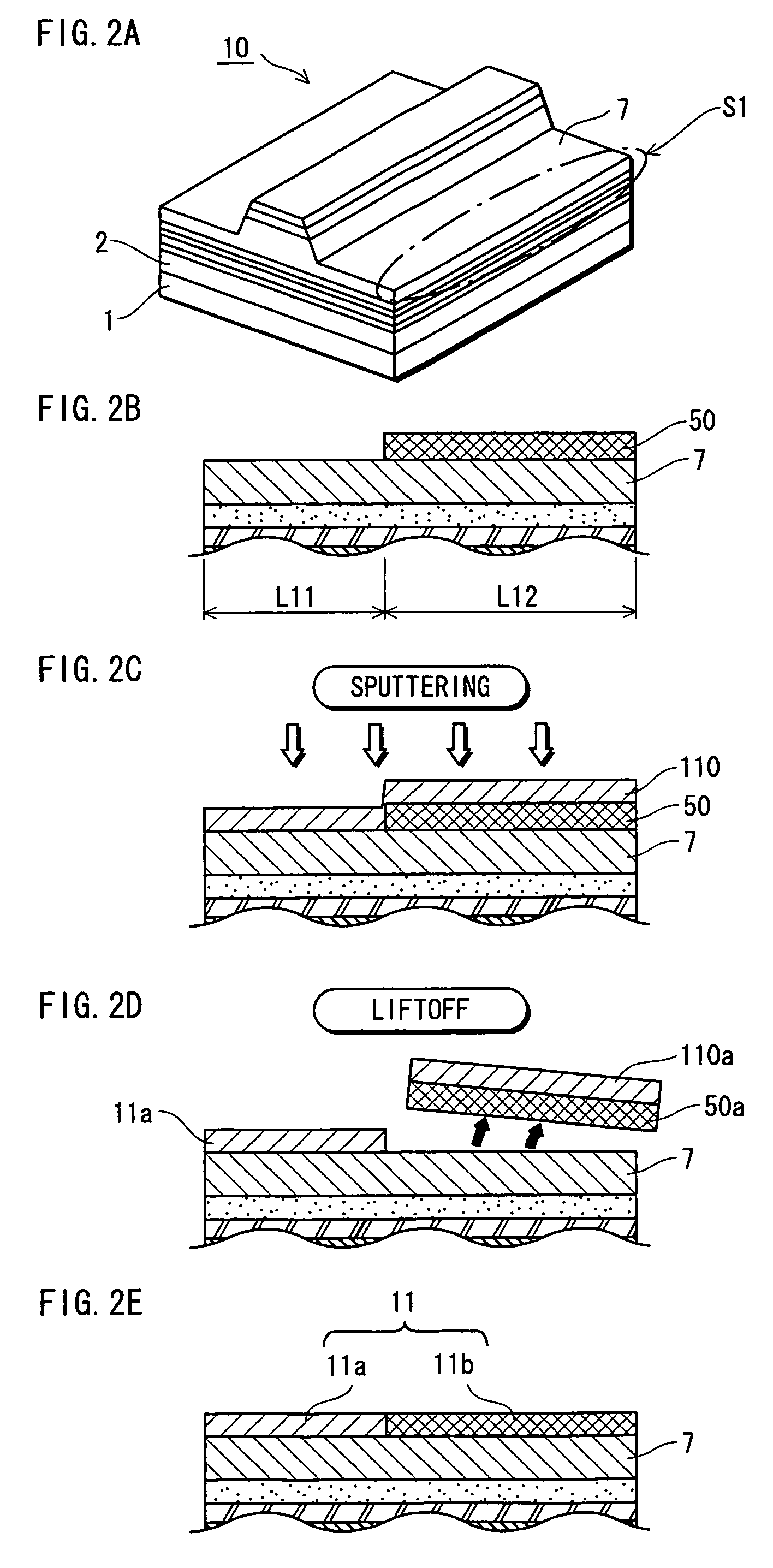Ridge-stripe semiconductor laser
a semiconductor laser and ridge-stripe technology, applied in semiconductor lasers, laser optical resonator construction, laser details, etc., can solve the problems of unstable laser light output, less effective stimulation emission, and reduced laser light output over time, so as to achieve the effect of reducing the optical confinement factor
- Summary
- Abstract
- Description
- Claims
- Application Information
AI Technical Summary
Benefits of technology
Problems solved by technology
Method used
Image
Examples
first embodiment
1. First Embodiment
[0029]1.1 Overall Configuration
[0030]FIG. 1A is a perspective view of a semiconductor laser 100. The semiconductor laser 100 has the following configuration: a laminated composite is formed by including an n-type cladding layer 2 and a p-type cladding layer 7, between of which an active layer 4 is disposed, and a pair of dielectric multilayer films 31 and 32 are positioned at the end faces of the laminated composite.
[0031]FIG. 1B shows a schematic cross section of the semiconductor laser 100 and the above-mentioned laminated composite is composed of the following layers.
[0032]A substrate 1 is an n-type GaN substrate, having the dimensions of 300 μm in width, 600 μm in length, and 400 μm in thickness.
[0033]The n-type cladding layer 2 of n-type Al0.05Ga0.95N with a thickness of 1.2 μm is laid on the substrate 1. Disposed on the n-type cladding layer 2 is an n-type GaN optical guide layer 3 with a thickness of 0.05 μm.
[0034]The active layer 4 of InGaN with a thicknes...
working example 1
The Semiconductor Laser 100 Where the Insulating Layer 11 of the Present Embodiment is Disposed
working example 2
The Semiconductor Laser 0.101 Where the Insulating Layer 12 of Modification 1 Above is Disposed
PUM
 Login to View More
Login to View More Abstract
Description
Claims
Application Information
 Login to View More
Login to View More - R&D
- Intellectual Property
- Life Sciences
- Materials
- Tech Scout
- Unparalleled Data Quality
- Higher Quality Content
- 60% Fewer Hallucinations
Browse by: Latest US Patents, China's latest patents, Technical Efficacy Thesaurus, Application Domain, Technology Topic, Popular Technical Reports.
© 2025 PatSnap. All rights reserved.Legal|Privacy policy|Modern Slavery Act Transparency Statement|Sitemap|About US| Contact US: help@patsnap.com



